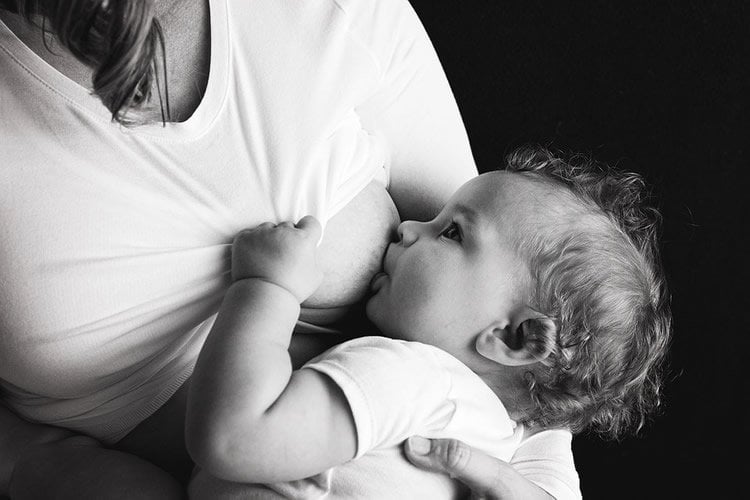Summary: According to researchers, the prevalence of being left-handed is lower in children who were breastfed compared to those who were bottle fed. The study proposes breastfeeding may optimize brain lateralization towards dominant handedness.
Source: University of Washington.
Bottle feeding infants is associated with left-handedness, according to a new study from the University of Washington. The study found that the prevalence of left-handedness is lower among breastfed infants as compared to bottle-fed infants. This finding was identified in about 60,000 mother-infant pairs and accounted for known risk factors for handedness.
The results provide further insight into the development of complex brain functions which ultimately determine which side of the batter box the infant likely will choose.
“We think breastfeeding optimizes the process the brain undergoes when solidifying handedness,” said Philippe Hujoel, the study’s author, a professor at the UW’s School of Dentistry and an adjunct professor of epidemiology at the School of Public Health. “That’s important because it provides an independent line of evidence that breastfeeding may need to last six to nine months.”

The study does not imply, however, that breastfeeding leads to right-handedness, Hujoel said. Handedness, whether it be right- or left-handed, is set early in fetal life and is at least partially determined by genetics. The research does sheds light on when the region of the brain that controls handedness localizes to one side of the brain, a process known as brain lateralization. Possibly, the research shows, breastfeeding optimizes this lateralization towards becoming right- or left-handed.
Source: Jackson Holtz – University of Washington
Publisher: Organized by NeuroscienceNews.com.
Image Source: NeuroscienceNews.com image is credited to Jennifer E. Fairman, CMI, FAMI.
Original Research: Open access research for “Breastfeeding and handedness: a systematic review and meta-analysis of individual participant data” by Philippe Hujoel in Laterality: Asymmetries of Body, Brain and Cognition. Published January 7 2019.
doi:10.1080/1357650X.2018.1555254
[cbtabs][cbtab title=”MLA”]University of Washington”How the Brain Decides Whether to Hold ’em or Fold ’em.” NeuroscienceNews. NeuroscienceNews, 7 January 2019.
<https://neurosciencenews.com/breastfeeding-handedness-10448/>.[/cbtab][cbtab title=”APA”]University of Washington(2019, January 7). How the Brain Decides Whether to Hold ’em or Fold ’em. NeuroscienceNews. Retrieved January 7, 2019 from https://neurosciencenews.com/breastfeeding-handedness-10448/[/cbtab][cbtab title=”Chicago”]University of Washington”How the Brain Decides Whether to Hold ’em or Fold ’em.” https://neurosciencenews.com/breastfeeding-handedness-10448/ (accessed January 7, 2019).[/cbtab][/cbtabs]
Abstract
Breastfeeding and handedness: a systematic review and meta-analysis of individual participant data
This study aims to determine whether breastfeeding duration affects the prevalence of nonrighthandedness in later life. A systematic search for studies on this topic was completed in 2018, and risk of bias was assessed by means of the Newcastle-Ottawa scale. Seven national surveys in five countries with Individual Participant Data (IPD) were identified (n = 62,129 mother-child dyads). These surveys had low risk of bias. An IPD meta-analysis showed that breastfeeding for < 1 month, 1 to 6 months, and > 6 months, when compared to bottle feeding, was associated with a 9%, 15% and 22% decreased prevalence of nonrighthandedness, respectively (Prevalence Ratio (PR) = 0.91, 95% confidence interval (ci): 0.83, 1.00; p-value = 0.05, PR = 0.85, 95% CI: 0.79, 0.92; p-value < 0.0001 and PR = 0.78; 95% CI: 0.71, 0.85; p-value < 0.0001). This dose-response relationship was significant (p < 0.001). No significant heterogeneity across surveys was detected (p-value > 0.54). Breastfeeding for longer than 9 months was not associated with further reductions in the prevalence for nonrighthandedness (p > 0.58). It is concluded that the critical age window for establishing hemispheric dominance in handedness includes the first 9 months of infancy and is in part determined by nurture.






